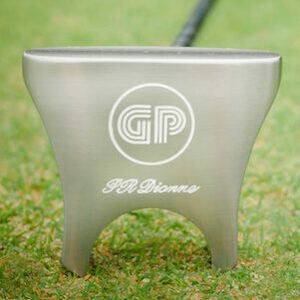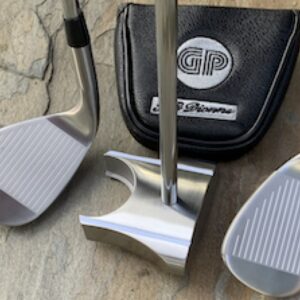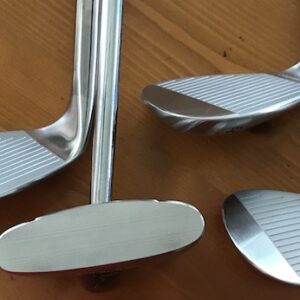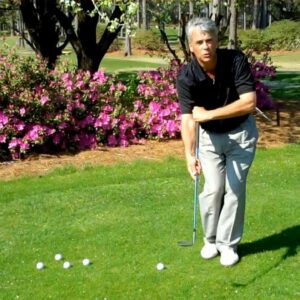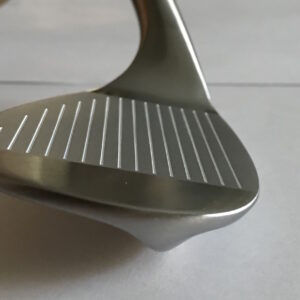Empower Your Game: Frequently Asked Questions (FAQ) about Our Golf Clubs
The GP Putter: A Great Putter That Stands the Test of Time
For over 17 years, golfers have relied on the GP Putter, which stands for “Great Putter.” With its sleek design, precision engineering, and unmatched performance, the GP Putter has become a trusted companion on the golf course for many avid golfers. After more than a decade in business, the GP Putter has proven to be a product that stands the test of time.
The GP Putter was introduced to the golfing world over 17 years ago with the aim of revolutionizing the way golfers approach putting. With its unique features and innovative design, the GP Putter quickly gained popularity among golfers of all skill levels. Its sleek and modern appearance, combined with its superior functionality, made it a must-have for those who are serious about improving their putting game.
One of the key factors that sets the GP Putter apart from other putters on the market is its precision engineering. The GP Putter is meticulously crafted with high-quality materials and cutting-edge technology to ensure that every putt is smooth and accurate. Its well-balanced design and optimal weight distribution allow for a natural and fluid putting stroke, resulting in improved consistency and accuracy on the greens.
What truly sets the GP Putter apart, however, is its durability. After 17 plus years in business, the GP Putter has proven to be a reliable and long-lasting product. Many golfers who purchased the GP Putter when it was first introduced still use it today, a testament to its durability and quality. The GP Putter has stood up to the test of time, enduring countless rounds of golf and maintaining its performance and reliability.
As one satisfied customer puts it, “I’ve been using the GP Putter for over a decade now, and it’s still my go-to putter. It’s a fantastic product that has helped me improve my putting game tremendously. The durability and consistency of the GP Putter are unmatched, and I wouldn’t trade it for any other putter on the market.”
Despite being in business for over 17 years, the GP Putter remains a top choice among golfers looking for a high-quality putter that delivers exceptional performance. Its reputation as a great putter has only grown stronger over the years, with many golfers considering it a staple in their golf bag. With its proven track record, the GP Putter has earned its place as a reliable and trusted tool for golfers seeking to improve their putting game.
In conclusion, the GP Putter, which stands for “Great Putter,” has been a formidable force in the golfing world for over 17 years. Its precision engineering, durability, and consistent performance have made it a go-to putter for many golfers. As one of the most reliable and long-lasting putters on the market, the GP Putter has proven to be a very good product that lives up to its name. Whether you’re a seasoned golfer or just starting out, the GP Putter is a wise investment that can help you elevate your putting game to new heights.
If golf were invented today, would golfers still be putting the same way?
This is an interesting question that raises a number of possibilities. On one hand, it’s likely that golfers would still be putting the same way. The conventional putting technique has been the standard for centuries and has proven to be effective for many golfers. Its familiarity and wide acceptance would likely make it difficult to change the way golfers putt.
On the other hand, if golf were invented today, technology and innovation might have a significant impact on the sport and the way golfers approach putting. For example, advancements in club design and materials could lead to the development of new putting styles that are more effective and easier to use. Golfers might experiment with alternative techniques such as side saddle or face-on putting, or they might develop entirely new putting styles.
It’s also possible that golfers would adopt new technologies and tools that would help them with their putting. For example, virtual reality simulations could be used to help golfers practice their putting and refine their techniques. Golfers might also use motion-sensing technology to analyze their swings and make adjustments to improve their putting accuracy.
In conclusion, if golf were invented today, it’s difficult to predict exactly how golfers would putt. While the traditional putting style would likely still be used, new technology and innovations could lead to new putting techniques and styles. Golfers would likely experiment with different approaches to find what works best for their game and their individual skills.
The PGA Tour is comprised of professional golfers from around the world, each with their own individual putting technique and preferences. While side saddle putting is not the most common technique seen on the PGA Tour, some professional golfers may still choose to use it for the reasons mentioned earlier, such as comfort, better aim, less wrist movement, or personal preference.
It’s important to note that golfers at the highest level of the sport have typically spent years developing and refining their technique, and they stick with what works best for them. So, even though side saddle putting may not be the most popular technique, if a professional golfer finds success with it, they will likely continue to use it.
In this insightful video, we dive into the commonly asked questions (FAQ) about the SkyLob wedge.
The key emphasis revolves around executing a traditional golf swing while ensuring the clubface remains square to your target. This specialized club presents a unique opportunity to simplify your approach when handling shots around the greens.
Maintaining a square clubface throughout your swing with the SkyLob wedge is pivotal. This technique maximizes the club’s design and features, resulting in a smoother and more effective game around the green. Adhering to this approach allows you to unlock the wedge’s potential, enhancing your short game and offering a more seamless experience with shots close to the pin.
The allure of the SkyLob wedge lies in its ability to streamline your playstyle, particularly with those crucial shots around the green. Its design elements are tailored to simplify and enable a more straightforward and effective technique for these delicate shots.
By focusing on a square clubface, this wedge empowers players to confidently and consistently tackle challenges around the green. The ultimate aim is to leverage the wedge’s capabilities, refining your short game and, consequently, enhancing your overall performance on the golf course.
The frequently asked questions (FAQ) regarding the HBB 56-degree wedge revolve around its bounce usage.
In situations when you’re in the fairway and aiming for the green, the bounce of the club isn’t typically required since the ball is struck before it reaches the ground. However, the clubface offers you the opportunity, upon impact, to impart more spin on the ball, granting you better control over its trajectory and movement.
PGA Tour statistics indicate a 50% success rate for putts made from 8 feet. Missing a putt from this distance adds an extra shot to your score, akin to nullifying the impact of your best drive of the day. This emphasizes the importance of practicing within 10 feet, the quickest route to enhance your skills and lower your score. Explore the putting statistics from the PGA Tour to understand the impact. That’s why I often get asked how to improve putting, and my answer’s simple: Practice those short putts! Getting better at putting is all about practice, practice, practice—especially those shots within 10 feet. Trust me, that’s where the magic happens! Perfecting those close shots can seriously step up your game. Spending time on these shorties is like taking the express route to refining your technique. And you know what that means? Better scores, more accuracy, a confidence boost, and, of course, a much cooler scorecard.
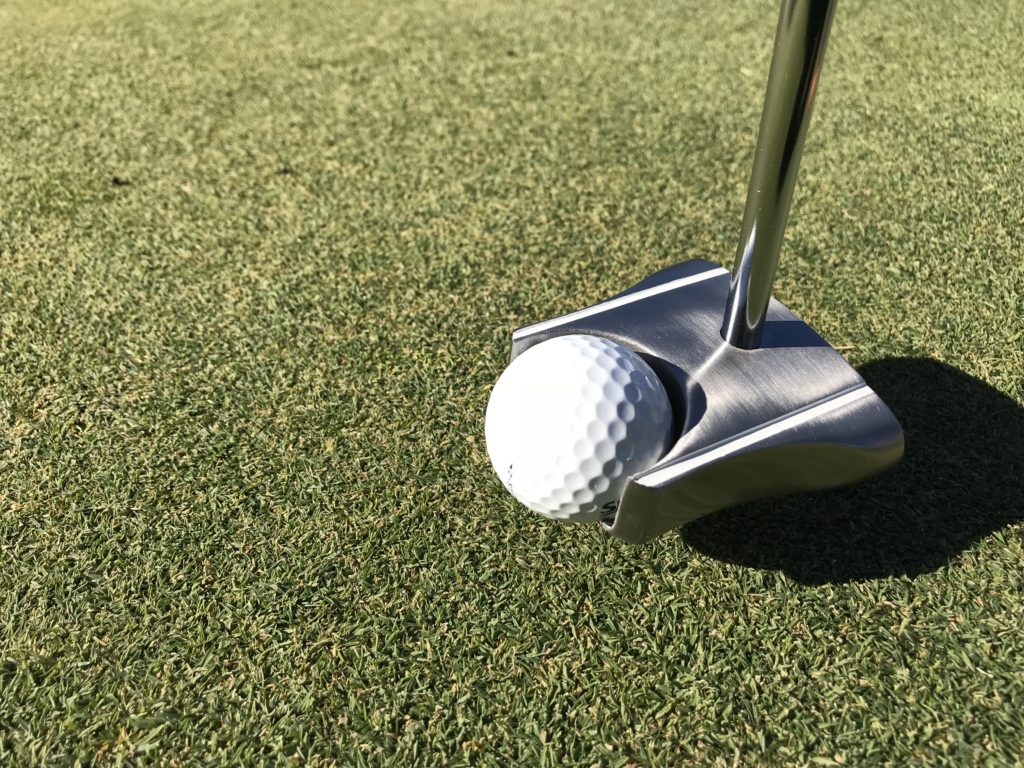
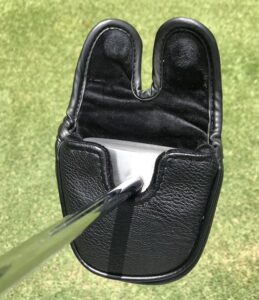

Frequently Asked Questions About Unconventional Putting Techniques.
Is it legal to putt croquet style?
Well, let’s just say in the world of golf, channeling your inner croquet player onto the putting green isn’t exactly par for the course! Putting croquet style might earn you a few chuckles, but according to golfing rules, it’s a no-go. Swinging the club between your legs or straddling the ball might work for croquet, but in golf, it’s a bit out of bounds!
Is it legal to putt between your legs?
Ah, the ol’ between-the-legs putt! While it might seem like a hilarious way to tackle the green, alas, golfing regulations firmly state that putting between your legs is a big no-no. Unless you’re aiming for laughs rather than birdies, it’s best to stick to conventional putting techniques. Just remember, in the game of golf, putting through the legs might earn you laughs, but it won’t score you any points on the leaderboard!
Top Face-On Putters Available for Purchase?
Are you in search of top-tier Face-On putters? Check out online retailers; they’re more likely to offer these specialized putters compared to physical golf stores. These putters are intricately crafted to enhance your putting performance, specifically tailored for the face-on putting stroke. It’s crucial to note that if any putter positions its head flat on the green during the putting stroke, it functions like a standard putter, opening and closing during the stroke, potentially causing push or pull putts. To avoid this, the key is to have the putter shaft upright throughout the stroke. With the shaft traveling along the target line, it maintains the putter head square to the target, ensuring a consistent stroke and alignment even during the follow-through on that target line.
